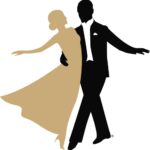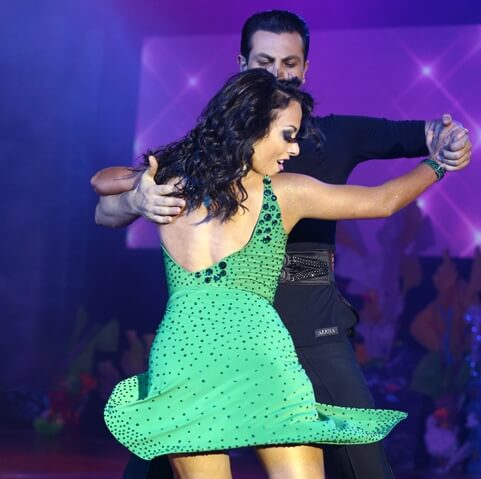A lively folk dance and music genre originating from the Dominican Republic, merengue dance is known for its energetic rhythms and vibrant presence in Latin American culture. This dance form has captivated audiences worldwide, becoming a symbol of Dominican identity and a favorite at Latin dance festivals and events.
In this blog post, the dance instructors at Fred Astaire Dance Studio dive into the rich history of merengue, exploring its origins, evolution, and enduring popularity as a dance style worth learning and mastering.
The Origins of Merengue
Merengue’s roots can be traced back to the late 19th century in the Dominican Republic. A blend of European musical styles such as contradanza, waltz, and polka, merengue seamlessly mixes these classic styles with African rhythms introduced by enslaved people. The fusion of these diverse influences created a unique sound and dance style that resonated with the Dominican people.
There are different schools of thought about where the name “merengue” originates. Some believe it stems from the French word “méringue” — a type of dessert — indicating the light, airy feel of the dance style. Others think the name derives from an African word or local expression. Whatever the case, there’s no arguing the merengue dance style’s overwhelming popularity as a cultural staple among Dominicans.
The Early Years
In its earliest years, merengue was performed using simple instruments like the accordion or güira, later incorporating the saxophone. These instruments blended together to form the foundation of merengue’s distinct sound.
Rural communities played a pivotal role in preserving and spreading merengue, with local musicians and dancers keeping the tradition alive through community gatherings and celebrations.
The first merengue recordings emerged in the early 20th century, capturing the essence of this folk genre. Early pioneers like Francisco “Ñico” Lora were instrumental in popularizing merengue, laying the groundwork for its national and international recognition.
The Golden Age
From the 1930s to 1960s, merengue entered its Golden Age, gaining national recognition and becoming an icon of Dominican culture. The government’s promotion of merengue as a national dance helped solidify its status, making it a staple at official events and celebrations.
Influential artists such as Johnny Ventura and his group, El Combo Show, played a significant role during this time, evolving the style through their innovative approach to merengue and introducing new rhythms and performance techniques. This period also saw the dance form become more structured and stylized, with formalized steps and routines.
The Modern Era
From the 1970s onward, merengue spread internationally into the U.S., where large Dominican communities embraced and promoted their cultural heritage. The genre’s adaptability allowed it to fuse with other musical styles, including hip-hop and pop, making it appealing to a broader audience.
Contemporary merengue superstars like Juan Luis Guerra and Elvis Crespo have brought the genre to new heights, infusing modern elements while maintaining its traditional roots. Their music has achieved global reach, ensuring that merengue remains relevant and popular in today’s music scene.
The Merengue Experience Today
Today, the merengue scene is vibrant, especially in cities with large Dominican populations such as New York, Miami, and Santo Domingo. Merengue continues to be a central element in celebrations and festivals, showcasing its cultural significance and widespread appeal.
Various styles and variations of merengue have developed over the years, from the traditional “merengue típico” to more modern interpretations. These diverse expressions of merengue reflect its dynamic nature and ability to adapt to changing musical landscapes.
Learn the Merengue Dance at Fred Astaire Dance Studio
Merengue’s infectious rhythm and lively dance moves make it a beloved art form, inviting people of all ages to join in the fun and celebrate the rich cultural heritage of the Dominican Republic.
At Fred Astaire Dance Studio, our dance instructors specialize in teaching this culturally rich and storied dance style, helping novice dancers master the art of moving like a true merengue dancer.
Start learning the art of merengue dance by reaching out to our dance instructors online to schedule your first lesson today.


